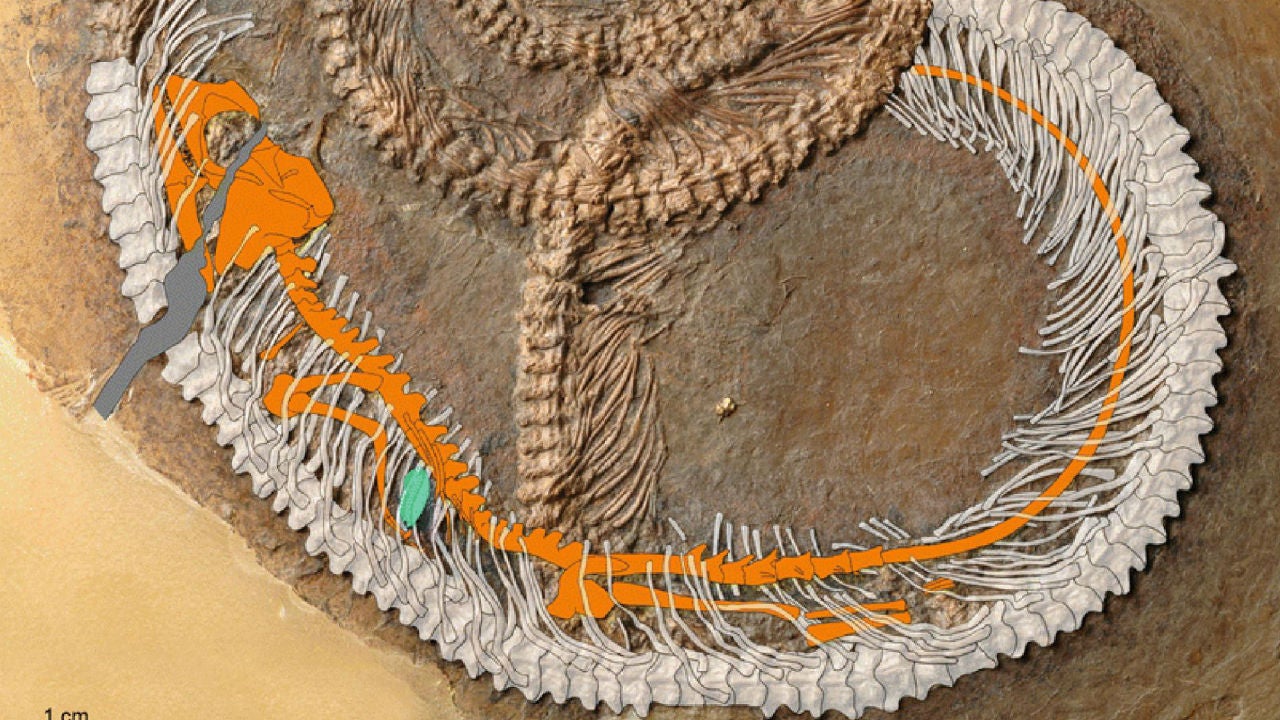A recently excavated fossil in Germany reveals an interesting look into a pretty bad day for a beetle, a reptile and a snake some 48 million years ago.
Krister Smith, the paleontologist at Germany’s Senckenberg Research Institute and Natural History Museum who led the study, told the National Geographic the finding “was pure astonishment.”
According to Smith, this is only the second time a fossil has revealed three levels — or tripartite — of an ancient food chain. The second was found in a 280-million-year-old shark.

Beetle inside a reptile inside a snake.
(Springer Heidelberg)
The fossil tells the story of an iguana-like reptile that had a meal out of an insect not long before it became the meal of a juvenile snake. Although one might think the tale was over, the snake soon met its own fatenear the UNESCO World Heritage site Messel Pit, a volcanic lake with toxic deep waters that likely spit out asphyxiating clouds of carbon dioxide, according to a press release by the Senckenberg Institute.
“Since the stomach contents are digested relatively fast and the lizard shows an excellent level of preservation, we assume that the snake died no more than one to two days after consuming its prey and then sank to the bottom of the Messel Lake, where it was preserved,” Smith said.
According to the study published in Senckenberg’s scientific journal Palaeobiodiversity and Palaeoenvironments, the snake measures 40 inches and the lizard 8.
It’s unclear exactly how the snake died, but it somehow became entombed in sediment at the bottom of the lake and was perfectly preserved.
“It’s probably the kind of fossil that I will go the rest of my professional life without ever encountering again, such is the rarity of these things,” Smith said.





